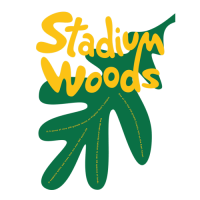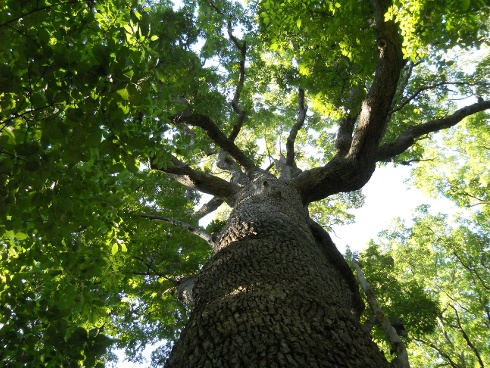What is an old-growth forest?
Old-growth forests are natural forests that have developed over a long period of time without experiencing severe, stand-replacing disturbance such as a fire, windstorm, logging, or development. They feature:
- A mix of young, old, and middle-aged trees
- Woody debris: large fallen trees & branches on the ground
- Large, dead standing trees (snags)
- Canopy gaps visible between the tree crowns
- Tipped-over trees and pits on ground
To learn more about efforts to protect ancient old-growth forests in the United States visit the Old Growth Forest Network.
Old-growth forests are rare
Like humans, forests can be classified as young, mature, or old. Due to past disturbances old forests are the rarest. Their amount has declined every year since European settlement. Currently less than 1% of eastern forests are old-growth!
Ecological and cultural roles of old-growth forests
The old-growth stage is important due its unique structure. These forests provide habitat, food, and nesting sites for wildlife including insects, birds, and animals.
Old-growth forest is one of the few land uses where topsoil is created instead of destroyed. More carbon and nitrogen is retained in an old-growth forest than in forests of other age classes. For improving water quality and air quality there is nothing better than an old-growth forest.
These forests provide health and psychological benefits. The most recognized but least studied attribute of older forests is their beauty. Many forest lovers drive or fly hundreds of miles each year to visit an old-growth forest. Stadium Woods is a tourist destination for old-growth forest enthusiasts.
Tree Inventory
The trees in Stadium Woods were inventoried by Virginia Master Naturalists in the winter of 2011. It will be updated in summer 2022 by a Virginia Tech undergraduate students.
Of the 24 species of trees in the 11.3-acre forest, the 2011 inventory found 526 living trees over 12″ in diameter, with 57 over three feet in diameter! Some of these trees are 250 to 450 years old.
Twenty-four species of trees grow in Stadium Woods. White oak is the predominant species, both in number and stature. There are over 200 white oaks.
Other dominant tree species
- Black oak: 119
- Black cherry: 47
- Sweet cherry: 34
- Black locust: 31
- Scarlet oak: 16
- Black walnut: 15
Published research on Virginia Tech’s old-growth forest
Bryophyte Diversity of On-campus Old-growth and Secondary-growth Forests in Montgomery County, Virginia
2021, Northeastern Naturalist
Allen W. Milby and Jordan S. Metzgar
Virginia Tech documentation regarding the Old Growth Forest
Stewardship Plan for Virginia Tech’s Old-Growth Forest near Lane Stadium
Rodney S. Walters, 2016
Stadium Woods: dendroecological reconstruction of an old-growth forest on a university campus
2014, Dendrochronologia
Author: Carolyn A. Copenheaver, John R. Seiler, John A. Peterson, Andrew M. Evans, Jason L. McVay and Justin H. White
Department of Forest Resources and Environmental Conservation, Virginia Tech, Blacksburg, VA 24060, USA and Department of Geography, Virginia Tech, Blacksburg, VA 24060, USA
“Virginia Tech … within the main campus property and located between the town of Blacksburg and the campus football stadium is an 4.6-ha forest patch that contains old-growth white oak (Quercus alba) trees known locally as Stadium Woods. The objective of this study was to reconstruct the disturbance history of this site from vegetation sampling and dendroecological analysis of the mature white oak trees….The oldest white oak core we sampled was 315-years old and the oldest trees (> 232 years)…The Stadium Woods represents a unique specimen of old-growth white oak forest set within the boundaries of a heavily populated area and reveals the importance of long-term tree-ring chronologies stored within urban forest patches.”

